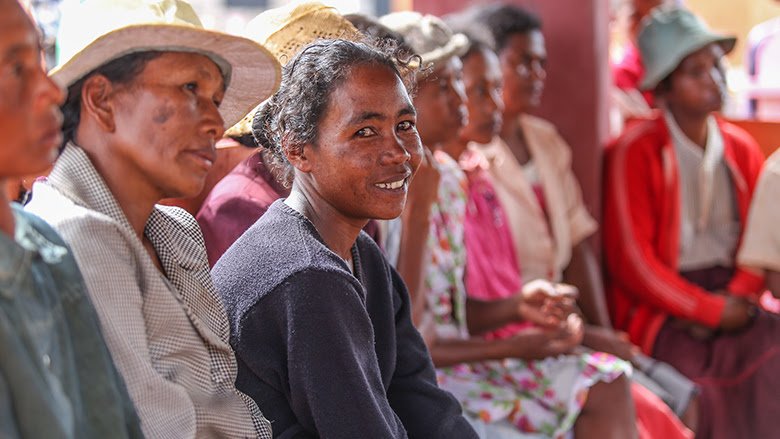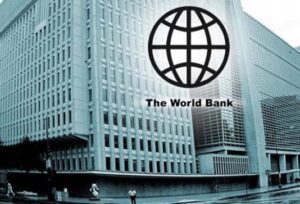Akihiko Nishio
Over the past quarter-century, the world has made enormous advances in the fight against extreme poverty. In that time, more than one billion people have risen out of its deadly grip. While this is a remarkable achievement, more than 700 million people still live on less than $1.90-per-day. That’s roughly one in every 10 people on the planet who are often let down by bad governance and are especially vulnerable to the world’s most urgent challenges – climate change, pollution, fragility, conflict, violence, and forced migration.
On top of these critical issues, we’re seeing a slowdown in global economic growth, which has been the strongest driver of poverty reduction in the last quarter century. The World Bank recently revised its global economic growth projections downward – from 2.9 percent to 2.6 percent. Slower growth means poverty reduction will be more difficult. Progress will be more uncertain, especially in the poorest countries.
Helping the poorest and most vulnerable is the central focus of the International Development Association (IDA) the World Bank’s concessional lending arm for the world’s poorest countries. IDA has played a key role in reducing poverty in countries across the world since it was founded in 1960, providing more than $360 billion in grants and near zero-interest loans for investments in 113 countries. In 2018 alone, IDA committed $24 billion in loans and grants.
The shifting nature of the challenges faced by low-income countries, as well as megatrends like the growth of the digital economy means that IDA must regularly evolve its approach to tackling poverty. So, this week a group of donor and borrow representatives is meeting in Addis Ababa to discuss where IDA should focus its programs in the next three-year IDA cycle covering from 2021–23. We are working to ensure that our operational targets and financial resources for IDA19 meet the collective ambitions of our stakeholders and, most importantly, the development needs of the people and countries we support.
Environmental investments, for example, are a growing priority. Climate change threatens agricultural systems, safety, and livelihoods and it is the poorest and most vulnerable people are most affected and who have the least resources to adapt. So, as part of the World Bank Group’s climate strategy, IDA investments focus on boosting investments in adaptation and resilience as well as helping countries move to low-carbon economies. That means climate-smart agriculture, sustainable cities, resilient infrastructure and nature-based solutions, including measures to address pollution.
A second key priority is addressing situations of fragility, conflict, and violence that can frequently prolong or exacerbate poverty. In fact, we estimate that 50 percent of the global poor will live in areas of fragility and conflict by 2030, unless we act. That’s why IDA doubled its financing from $7 billion to $14 billion between 2017 and 2020, as well as more than $2 billion to support refugees and the communities that host them. We expect this to be a similarly important area for the next three-year cycle.
And IDA is increasingly looking to address the long-term drivers of fragility to avoid tensions escalating to situations of violence. Providing decent work that allows people to sustain their families and save for the future is part of this agenda, especially in IDA countries where we estimate that 28 million jobs will be needed each year simply to meet the employment new labor market participants.
IDA’s investments are helping drive economic transformation by creating the conditions for the private sector to flourish and create jobs. And IDA’s ‘Private Sector Window’ provides $2.5 billion to attract private sector financing and to reduce risks for investments in the most challenging markets. Initial support has ranged from increasing access to local currency financing for small and medium enterprises in Cambodia, to modernizing processing facilities in Afghanistan that help connect thousands of farmers to new markets.
But there can be no economic transformation without equal participation of women and men. IDA projects are helping empower women and girls to participate more fully in the economy by promoting greater ownership and control of assets and financial services, empowering women through technology, and supporting women entrepreneurs. This could unlock trillions of dollars in potential wealth for the countries that need it most.
We are also helping build human capital through investments in health, education, and social protection. IDA is the world’s largest financer for education, committing almost $2 billion annually, and lends around $1 billion for health each year. Between 2011 and 2018, IDA financing helped recruit or train 8.5 million teachers and provide 657 million people with essential health services.
Finally, we know that effective governance is essential to reducing poverty. Through institution-building, mobilizing resources for service-delivery, and promoting transparency and accountability, we are helping countries channel public resources to the poorest and most vulnerable and develop institutions that build trust and sustain development progress.
Working with a wide range of partners – from the public and private sectors, to multilateral agencies and civil society organizations – we will continue to help the poorest countries strengthen their economies, provide stability, and create equality of opportunity.
We face daunting, interconnected challenges, but IDA – and the entire World Bank Group – will help the poorest countries meet those challenges and continue our drive to end extreme poverty. I am confident that the meetings this week in Ethiopia will result in an IDA policy package that zeros on the most transformative interventions with the greatest potential impact.
(Akihiko Nishio is the World Bank Vice President of Development Finance (DFi)




